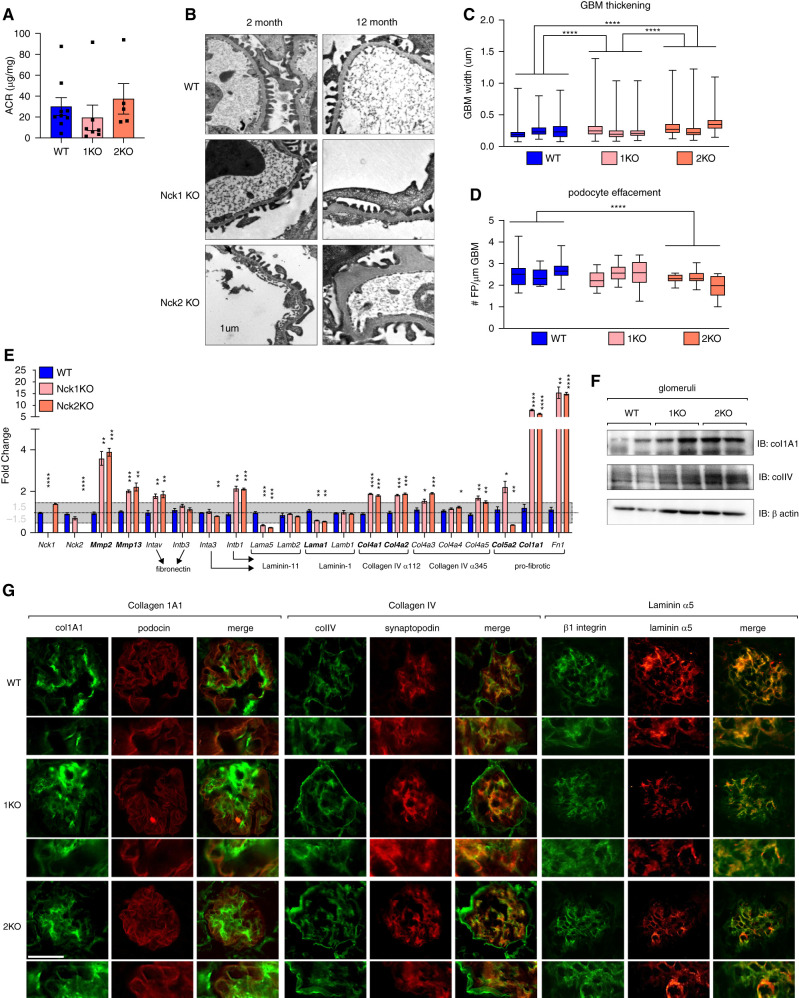Figure 7.
Knockout of Nck1 or Nck2 results in GBM abnormalities during aging, and is accompanied by mild foot process effacement in the absence of Nck2 but not Nck1. (A) Albumin-creatinine ratios (ACR) of urine from 12-month-old WT, Nck1 KO, and Nck2 KO mice demonstrate the lack of proteinuria in all genotypes during aging. (B) Transmission electron micrographs of 2- and 12-month-old mice, accompanied by quantification of (C) podocyte effacement and (D) GBM thickening. Scale bar, 1 μm. ****P<0.0001, two-way ANOVA and Tukey multiple comparisons test. Box-and-whisker plots represent independent measurements within each animal. (E) Real-time RT-PCR of kidney cortex samples (2-month-old WT, Nck1 KO, and Nck2 KO mice). Genes identified as altered in the preceding microarray are in bold font. Relationships between adhesion genes and the matrix ligands they bind are indicated by arrows. *P<0.05, **P<0.01, ***P<0.001, ****P<0.0001, two-way ANOVA and Tukey multiple comparisons test. (F) Immunoblotting (IB) of collagen 1A1 and type IV collagen in WT, Nck1 KO, and Nck2 KO glomerular lysates. (G) Dual immunofluorescence microscopy of kidney sections stained for collagen 1A1, type IV collagen, and laminin α5 from WT, Nck1 KO (1KO), and Nck2 KO (2KO) mice. Scale bar, 100 μm.

